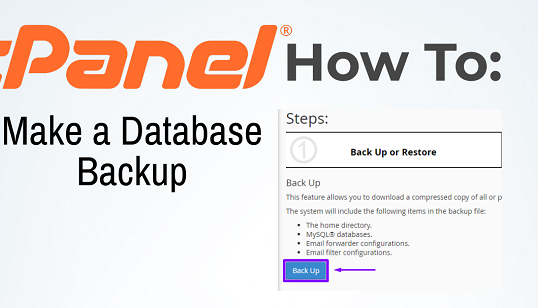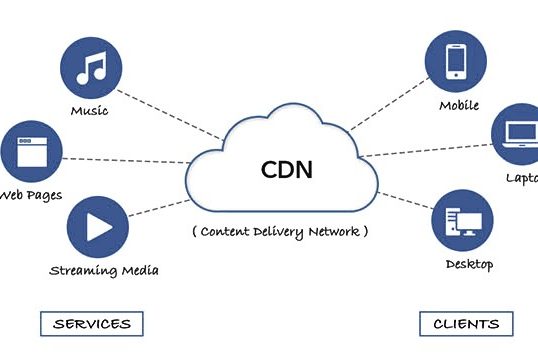
Table of Contents

What is MongoDB ?
MongoDB is a NoSQL, document-oriented database used in web hosting for managing and storing large amounts of unstructured data. Unlike traditional relational databases that use tables and rows (like MySQL or PostgreSQL), MongoDB stores data in flexible, JSON-like documents, making it easier to work with complex, variable data structures.
Here’s how MongoDB is commonly used in web hosting:
1. Scalability:
- Horizontal scaling: MongoDB is designed to scale across many dedicated servers. It can handle large amounts of data and traffic by distributing the load across multiple nodes.
- Sharding: MongoDB supports sharding, which allows large datasets to be split across multiple servers, improving performance and reliability in large-scale applications.
2. Flexibility:
- Schema-less: MongoDB does not require a predefined schema, meaning you can store different types of data in a single collection. This is useful for web applications where data formats might evolve over time.
- JSON/BSON format: Documents are stored in BSON (Binary JSON), which allows complex hierarchical data to be easily stored and retrieved.
3. Performance:
- MongoDB is optimized for read and write performance. For applications that require quick access to large datasets, such as web apps with real-time data, MongoDB is a good choice.
4. Integration with Modern Web Technologies:
- MongoDB is often used with popular web hosting stacks like the MEAN (MongoDB, Express, Angular, Node.js) or MERN (MongoDB, Express, React, Node.js) stacks, which are popular in modern web development.
5. Cloud Hosting:
- MongoDB Atlas: MongoDB offers its own cloud service called MongoDB Atlas, which provides managed MongoDB web hosting with automatic scaling, backup, and monitoring. Many web hosting services integrate with MongoDB Atlas to provide seamless database management.
Use Cases in Web Hosting:
- Content management systems (CMS): MongoDB can be used to store blog posts, articles, or multimedia files in a CMS.
- Real-time applications: Applications like chat systems, social networks, or dashboards benefit from MongoDB’s speed and flexibility.
- E-commerce platforms: Product catalogs with diverse and changing attributes can be efficiently managed using MongoDB’s dynamic schema.
In summary, MongoDB is ideal for web hosting environments where flexible, high-performance, and scalable database management is needed, especially for modern, dynamic web applications.
Applications of MongoDB :
MongoDB has a wide range of applications in web hosting due to its flexibility, scalability, and ability to handle unstructured data. Here are some key applications of MongoDB in web hosting:
1. Content Management Systems (CMS):
- MongoDB is used in CMS platforms where the data structure may change frequently (e.g., blog posts, articles, multimedia). Its schema-less nature allows developers to store diverse data types without predefined schemas.
- Example: Storing articles, images, videos, and user comments in a flexible format.
2. Real-Time Analytics:
- MongoDB is well-suited for storing large amounts of rapidly changing data, such as logs, metrics, and analytics data.
- Web applications like dashboards, business intelligence (BI) tools, and performance tracking systems benefit from MongoDB’s ability to store real-time data.
- Example: Tracking real-time user behavior on a website or analyzing server logs.
3. E-Commerce Platforms:
- MongoDB is often used in e-commerce applications to store product catalogs, customer profiles, order histories, and shopping cart details. Its ability to handle dynamic schema allows for easy modification of product attributes without requiring a full database migration.
- Example: A store that frequently adds new categories, products, and features like reviews, ratings, or special promotions.
4. Social Networking Applications:
- Social media platforms require scalable databases to manage massive volumes of user data, including posts, messages, profiles, images, and videos. MongoDB is ideal due to its high performance in write-heavy environments.
- Example: Storing user posts, likes, comments, and real-time interactions.
5. IoT (Internet of Things) Applications:
- MongoDB is used in IoT applications to store data from various devices and sensors. Since IoT data can vary greatly in structure, MongoDB’s flexible document model allows it to efficiently manage and process the data.
- Example: Collecting and storing data from smart home devices, environmental sensors, or industrial IoT systems.
6. Gaming Applications:
- Online gaming applications require databases that can manage large datasets, such as user profiles, game states, leaderboards, and real-time game data. MongoDB’s ability to handle high throughput and real-time updates makes it ideal for these applications.
- Example: Storing player statistics, achievements, and multiplayer game session data.
7. Cloud-Based Applications:
- MongoDB is commonly used in cloud environments (e.g., AWS, Azure, Google Cloud) due to its ability to scale horizontally. Many cloud web hosting providers offer managed MongoDB services (like MongoDB Atlas) that take care of database maintenance, scaling, and backups.
- Example: Building SaaS applications that require distributed databases to handle user requests globally.
8. Mobile Applications:
- MongoDB is often used in backend services for mobile applications, where data such as user profiles, preferences, and app states need to be stored and synced across devices.
- Example: Storing offline data for a mobile app that synchronizes when the user reconnects to the internet.
9. Microservices Architecture:
- MongoDB is commonly used in microservices-based applications. Each service may have its own database, and MongoDB’s flexibility allows it to adapt to the specific needs of each microservice without being tied to rigid schemas.
- Example: Using MongoDB to manage various services in a larger web application, like authentication, product management, and payment processing.
10. Personalization and Recommendation Systems:
- Many web hosting platforms use MongoDB to power recommendation engines, personalizing content for users based on their activity and preferences.
- Example: Generating recommendations on an e-commerce platform based on user browsing and purchase history.
11. High Traffic Web Applications:
- MongoDB is used to handle large-scale applications with millions of users, as it is designed to manage high-traffic, write-heavy operations.
- Example: Large-scale social media websites or content-driven platforms like news outlets.
12. Healthcare Systems:
- In healthcare applications, MongoDB is used to store patient records, medical histories, and other structured and unstructured data. Its ability to handle complex data relationships makes it suitable for medical data management.
- Example: Storing electronic health records (EHR) for hospitals and clinics.
13. Financial Services:
- Financial institutions use MongoDB to store transactional data, customer profiles, and real-time analytics. It’s also used to handle regulatory compliance data that requires high flexibility.
- Example: Managing customer transactions and generating real-time fraud detection analytics.
In summary, MongoDB’s applications in web hosting span a wide range of industries and use cases, especially where high scalability, flexibility, and performance are essential. It’s particularly well-suited for modern web hosting and mobile applications that deal with large volumes of dynamic, unstructured data.
Advantages and Disadvantages of MongoDB :
Advantages of MongoDB:
- Flexible Schema:
- Schema-less: MongoDB does not require a predefined schema, which allows for flexibility in data modeling. This makes it easier to modify the structure of data as your application evolves without downtime.
- Dynamic Documents: Each document in a collection can have different fields, making it easy to store diverse data types and formats.
- Scalability:
- Horizontal Scaling (Sharding): MongoDB supports horizontal scaling by distributing data across multiple servers or clusters. This is ideal for large datasets and high-traffic applications.
- High Availability: MongoDB uses replication with automatic failover, ensuring high availability. If a primary node fails, a secondary node can take over automatically.
- Performance:
- Fast Write Operations: MongoDB excels in handling large volumes of write-heavy operations with high throughput.
- Real-Time Data: Suitable for applications that need real-time analytics and data updates due to its ability to handle rapidly changing datasets.
- Document-Oriented Storage:
- BSON Format: Data is stored in BSON (Binary JSON), which allows for the storage of rich, hierarchical data structures like nested objects and arrays.
- Ease of Access: Data stored in documents mirrors how developers represent data in their code, making it easier to retrieve and manipulate.
- Strong Support for Big Data:
- MongoDB is built to handle large datasets efficiently, making it a popular choice for applications with big data requirements, such as analytics and IoT applications.
- High Availability with Replica Sets:
- MongoDB’s replica sets ensure data redundancy and reliability by keeping copies of the data across multiple nodes, which helps maintain uptime and disaster recovery.
- Integrated with Cloud Platforms:
- MongoDB integrates well with cloud platforms like AWS, Azure, and Google Cloud. MongoDB Atlas (a cloud-based service) offers managed web hosting, automatic backups, scaling, and monitoring.
- Supports Complex Queries:
- MongoDB supports rich and complex queries, including indexing, geospatial queries, and text search, making it powerful for querying large datasets.
Disadvantages of MongoDB:
- Lack of ACID Transactions (Before Version 4.0):
- Prior to MongoDB 4.0, support for multi-document ACID transactions was limited. Although MongoDB now supports ACID transactions, traditional relational databases still have more mature support for complex transactional operations.
- Memory Usage:
- MongoDB can consume more memory than other databases because it maintains multiple copies of data (e.g., for indexing, replication) and stores data in BSON, which may increase the data size compared to other formats.
- No Joins:
- MongoDB does not support traditional SQL-style joins natively. While it offers an aggregation framework to mimic some join functionality, complex relational queries might be more difficult to implement compared to relational databases.
- Consistency Challenges:
- In distributed systems, MongoDB prioritizes availability over strict consistency (in line with the CAP theorem). This can lead to eventual consistency issues in certain configurations, which might not be suitable for applications requiring strong consistency guarantees.
- Limited Query Performance for Complex Relationships:
- Although MongoDB can handle complex queries, it might not be as efficient as relational databases when dealing with complex relationships between data entities. In applications requiring many interrelated datasets, a relational database may offer better performance.
- Manual Index Management:
- MongoDB doesn’t automatically optimize indexes as data grows. Developers must manually create and manage indexes for query optimization, which can lead to performance bottlenecks if not done properly.
- Learning Curve:
- For developers and administrators familiar with relational databases, MongoDB’s document-oriented model and its differences from SQL (e.g., lack of joins, different query language) can present a learning curve.
- Backup and Recovery Limitations:
- Backing up large MongoDB databases can be challenging. The backup and restore process, especially in sharded clusters, can require careful planning and management compared to traditional databases.
- Limited Support for Complex Transactions:
- While MongoDB has improved its transactional support, it still may not be the best choice for highly transactional systems, such as banking applications, where strong consistency and complex multi-document transactions are required.
- High Storage Overhead:
- The BSON format and its support for rich document storage come with higher storage overhead compared to more optimized, compact storage solutions found in relational databases.
Advantages of MongoDB include flexibility, scalability, and performance, making it a strong choice for modern web and big data applications. Disadvantages include potential challenges with complex transactions, memory consumption, and lack of native joins, which can make it less suitable for highly relational or transactional applications.




